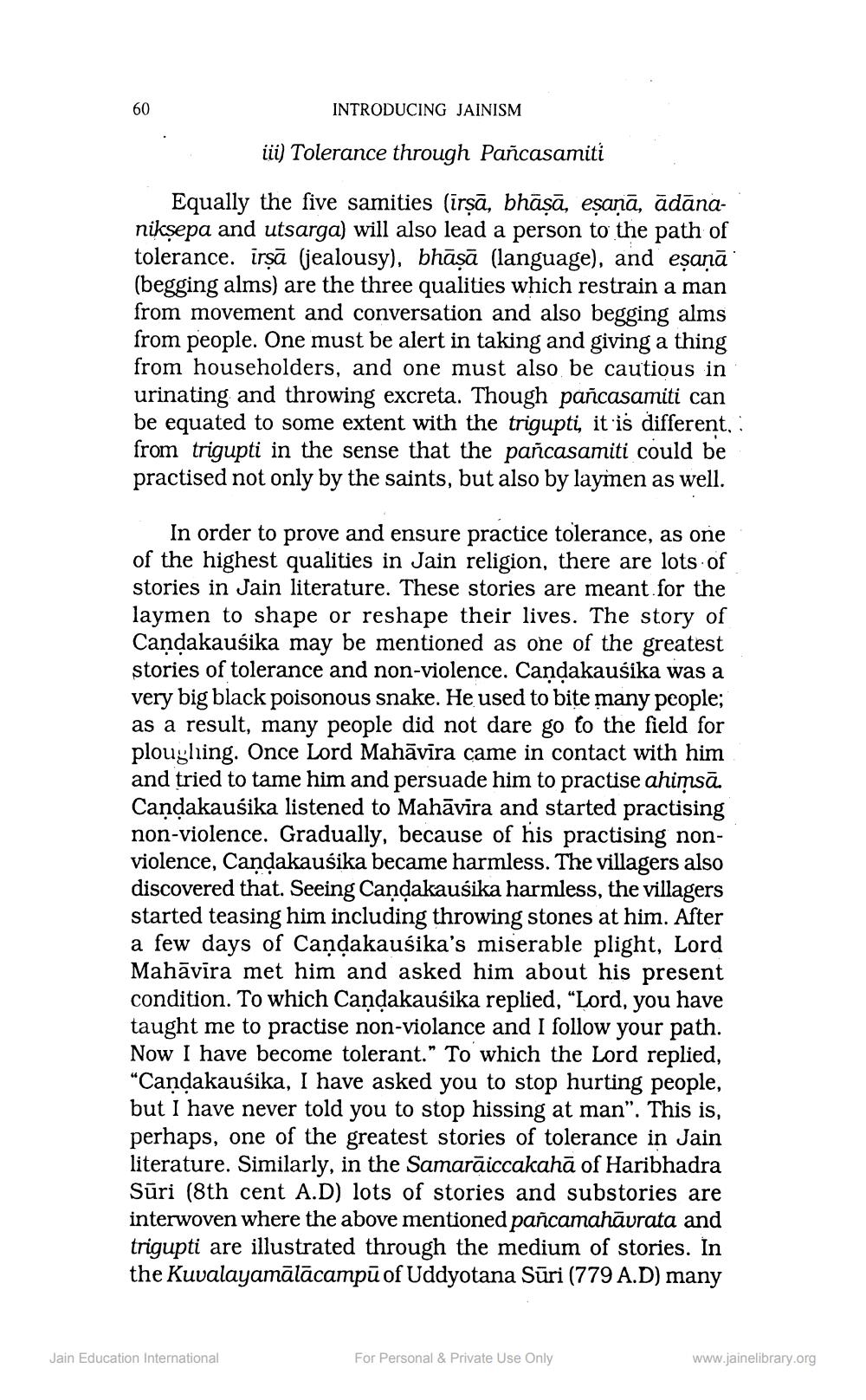________________
60
INTRODUCING JAINISM
iii) Tolerance through Pañcasamiti
Equally the five samities (īrṣā, bhāṣā, eṣaṇā, ādānanikṣepa and utsarga) will also lead a person to the path of tolerance. irṣā (jealousy), bhāṣā (language), and eṣaṇā (begging alms) are the three qualities which restrain a man from movement and conversation and also begging alms from people. One must be alert in taking and giving a thing from householders, and one must also be cautious in urinating and throwing excreta. Though pañcasamiti can be equated to some extent with the trigupti, it is different.. from trigupti in the sense that the pañcasamiti could be practised not only by the saints, but also by laymen as well.
In order to prove and ensure practice tolerance, as one of the highest qualities in Jain religion, there are lots of stories in Jain literature. These stories are meant for the laymen to shape or reshape their lives. The story of Candakausika may be mentioned as one of the greatest stories of tolerance and non-violence. Candakausika was a very big black poisonous snake. He used to bite many people; as a result, many people did not dare go to the field for ploughing. Once Lord Mahāvīra came in contact with him and tried to tame him and persuade him to practise ahimsā. Candakausika listened to Mahāvīra and started practising non-violence. Gradually, because of his practising nonviolence, Candakausika became harmless. The villagers also discovered that. Seeing Candakausika harmless, the villagers started teasing him including throwing stones at him. After a few days of Candakausika's miserable plight, Lord Mahavira met him and asked him about his present condition. To which Candakausika replied, "Lord, you have taught me to practise non-violance and I follow your path. Now I have become tolerant." To which the Lord replied, "Candakausika, I have asked you to stop hurting people, but I have never told you to stop hissing at man". This is, perhaps, one of the greatest stories of tolerance in Jain literature. Similarly, in the Samaraiccakahā of Haribhadra Sūri (8th cent A.D) lots of stories and substories are interwoven where the above mentioned pañcamahāvrata and trigupti are illustrated through the medium of stories. In the Kuvalayamālācampū of Uddyotana Suri (779 A.D) many
Jain Education International
For Personal & Private Use Only
www.jainelibrary.org




